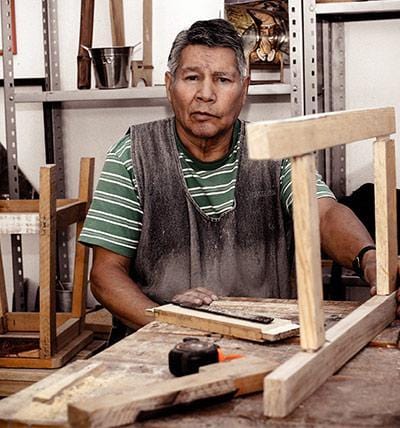Designing a wine cellar is an endeavor that goes beyond simple storage—it’s about creating a space that reflects your passion for wine and ensures your collection matures in an optimal environment.
The type of wood you select plays a crucial role in this process, influencing everything from humidity control to the visual appeal of your cellar.
This guide dives deeper into the nuances of selecting the perfect wood, offering expert insights to help you make an informed choice.
The Role of Wood in Wine Cellar Engineering
Wood isn’t just a material in your wine cellar; it’s a key component that interacts with the environment, influencing temperature regulation, humidity levels, and even the air quality.
The right wood choice creates a stable microclimate that is essential for the preservation and aging of your wines (source).
This balance between functionality and aesthetics is what separates a good wine cellar from an exceptional one.
Choosing the right wood is about more than just looks—it’s about creating an environment where your wine can reach its full potential.
Critical Factors for Wood Selection

- Thermal Insulation
- Resistance to Seasonal Fluctuations
- Pore Structure and Impact on Microclimate
- Acoustic and Sensory Qualities
Thermal Insulation and Stability
Woods like Mahogany and Teak are not only resistant to moisture but also offer superior thermal insulation.
This property helps maintain a consistent temperature within your cellar, a key factor in preventing the wine from aging prematurely (source).
Mahogany, for instance, is prized for its tight grain and density, which provide natural insulation and resistance to the expansion and contraction that can compromise the integrity of lesser woods.
A more detailed example can be found in the traditional cellars of Bordeaux, where Mahogany has been used for centuries due to its ability to maintain a stable environment, even as external temperatures fluctuate.
The thermal properties of your chosen wood can significantly reduce the workload on your cooling system, leading to energy efficiency and long-term cost savings.
Resistance to Seasonal Fluctuations

Wood must not only resist humidity but also the subtle seasonal changes that can affect a wine cellar’s internal environment.
Cedar and Pine are often noted for their resistance to warping in humid conditions, but it’s their performance during dry spells that truly matters. Cedar, while aromatic, can expand or contract slightly in drier conditions, which is why some experts recommend pairing it with a more stable wood like Maple for structural elements.
A deeper understanding of wood behavior shows that Redwood, adapts well to varying humidity levels due to its natural tannins and oils, which protect it from rot and decay.
A blend of Redwood for racks and another stable wood for the structural framework can offer both flexibility and durability. Wine Cellar HQ recommends Redwood as the best wood for a wine cellar (ref).
Using a combination of woods that balance each other's strengths ensures that your wine cellar remains stable and uncompromised, regardless of seasonal changes (source).
Pore Structure and Its Impact on the Microclimate
The pore structure of wood influences the cellar’s microclimate by affecting how it interacts with the surrounding air.

Oak, with its prominent grain, allows for slight airflow, which can help prevent mold but may also require more diligent humidity control.
On the other hand, Poplar—though less aesthetically striking—has a fine, closed grain that minimizes air exchange, creating a more controlled environment.
For those keen on absolute control over their cellar conditions, Cherry wood offers a fine grain with minimal porosity, reducing the chances of ambient odors or chemicals influencing your wine. It’s a preferred choice in high-end, custom cellars where precision is key.
Understanding the grain and pore structure of wood enables you to tailor your cellar's microclimate, enhancing the aging process of your wine.
Acoustic and Sensory Qualities
A wine cellar isn’t just about sight and function; it’s also about sound and smell. Woods like Walnut not only provide a rich, visual appeal but also dampen sound effectively, creating a quieter, more serene environment.

This might seem like a small detail, but in a space where you might host tastings or savor a moment of solitude, the acoustics matter.
Moreover, the olfactory impact of wood should not be overlooked. Avoid woods like Cedar or Eucalyptus unless they are fully sealed, as their strong scents can seep into the corks, subtly tainting your wines over time.
Instead, opt for Alder or Beech, which have neutral scents, allowing the wine’s bouquet to remain untouched.
The acoustic and sensory properties of wood play a subtle but important role in the overall ambiance of your wine cellar, enhancing your experience every time you step inside.
Integrating Form and Function in Your Wine Cellar Design
Selecting wood for your wine cellar is not just about practicality; it’s an opportunity to create a space that reflects your personality and passion.
Maple, with its light, clean lines, can modernize a space, offering a sharp contrast to the deep reds of your finest vintages. In contrast, American Cherry brings warmth and a sense of tradition, making it a favorite among those who appreciate classic elegance.

For a sophisticated, multi-dimensional look, some cellar builders integrate Ebony accents with Ash racking. This combination not only provides visual depth but also emphasizes the unique characteristics of each wood.
Integrating various woods thoughtfully allows you to design a wine cellar that is as unique as your collection, balancing form, function, and personal style.
Expert Takeaways
- Thermal insulation provided by dense woods like Mahogany ensures stable temperatures, reducing the risk of premature aging.
- Combining woods with different resistance properties can create a balanced environment that adapts to seasonal fluctuations.
- Understanding pore structure helps in managing the cellar’s microclimate, crucial for wine preservation.
- Acoustic qualities of wood contribute to the overall ambiance, enhancing the sensory experience of your wine cellar.
A well-considered wood selection transforms your wine cellar from a storage space into a curated environment that both protects and showcases your collection, reflecting your dedication and discerning taste.
ABOUT THE AUTHOR
Fred Felton
Content Creator / Editor
Fred Felton is a copywriter, editor and social media specialist based in Durban, South Africa. He has over 20 years of experience in creating high end content. He has worked with some of the biggest brands in the world. Currently Fred specialises in the wooden arts and crafts space, focussing on innovative wooden product design. He is also a keynote speaker and has presented talks and workshops in South Africa.






